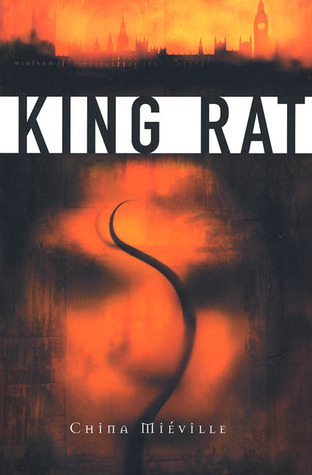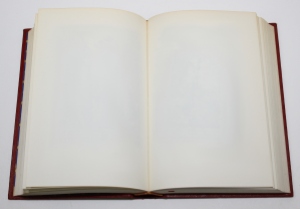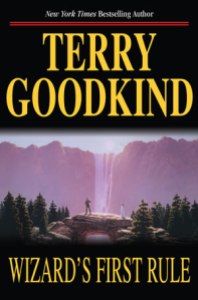
Image courtesy beyondhollywood.com.
After last night’s explosive season finale of HBO’s “Game of Thrones,” I’m in a real Song of Ice and Fire mood. To date, I don’t think any TV show or book series has ever inspired as much conjecture and speculation as these–and why not? Every second they’re onscreen or on the page, these characters are in serious danger of getting whacked.
I, of course, love to speculate as much as anybody, but I confess that it’s not much fun to guess what’s going to happen on the show when you’ve read all the books. Miraculously, every time I guess what will happen next on the show, I’m correct!
So instead, I’ve elected to make guesses about the novels–like in this here blog, for instance. These are my predictions for the sixth installment of A Song of Ice and Fire.
I know that this blog might be premature. Hell, this blog most certainly is premature, but that’s alright. George R.R. Martin’s latest masterwork will be upon us sometime within the next three years or so (hopefully), and I, as always, am a huge fan of speculation.
So let’s speculate.
SPOILER ALERT–IF YOU HAVEN’T READ BOOKS 4 AND 5 YET, YOU MIGHT NOT WANT TO READ THIS.
Anybody left?
You’ve read 4 and 5?
Okay, awesome. Let’s continue…
You clearly know a lot about A Song of Ice and Fire, so you know there are a lot of characters. Therefore, I’m going to do what Mr. Martin did in his fourth and fifth volumes–I’m going to separate the POV characters from A Feast for Crows and A Dance with Dragons into two separate blogs. The latter will be available at a later date, the former…right now.
Let’s start in King’s Landing, with Cersei. After the ordeal she suffered at the hands of the Faith, it appears she might be broken. I doubt it. With Kevan Lannister dead, she’s going to pick up right where she left off–ruining the kingdom. In fact, Varys essentially says as much when he kills Kevan; Cersei will botch the whole project, paving the way for Aegon Targaryen to take the Iron Throne. That’s right–I predict a Targaryen will finally rule Westeros, just not Daenerys. More on her later…
In Oldtown, Sam Tarly is becoming a maester. Logistically, this process has to go pretty fast. The Others are coming soon, and Sam might hold the secret to defeating them. Sam also makes friends with Pate, who we of course know isn’t really Pate. A lot of readers have matched the description of the Alchemist to Jaquen H’agar’s new face at the end of A Clash of Kings, and it seems that this mysterious alchemist has now taken the face of the ill-fated pig-boy. I never made that connection until somebody pointed it out on a message board, but I think it’s accurate. For some reason, H’agar wants a master key to the citadel. Could it have something to do with fighting the Others? Or maybe a weapon to defeat dragons? I don’t even have a guess here.
But speaking of the Citadel, what the heck is Marwyn doing? He tells Sam that he’s going across the sea to meet Daenerys Targaryen, but it’s not really clear why. Does he want to destroy her dragons? Does he want them for himself? Based on the general greediness of Martin’s characters, and on the fact that dragons are in vogue in Westeros, my money’s on the latter.
In the Riverlands, the whole thing with Brienne and Jaime is getting a little too dicey for me. Brienne’s apparent plan is to lure Jaime into the woods so that Catelyn, a.k.a. Lady Stoneheart, can kill him. Please, Mr. Martin, I beg you…don’t kill Jaime Lannister! The guy’s my favorite character!
Before you get mad, hear me out. Jaime has done some terrible things–but I like him precisely because he’s done terrible things. He’s really just misunderstood, and he actually turns into a pretty good guy in A Storm of Swords and the following volumes. The incest thing is pretty inexcusable, I agree. But hey, nobody’s perfect! Fortunately for Mr. Lannister, Martin usually likes to suggest one thing, then do something totally different. Therefore, if he’s suggesting that Jaime is being lured to his death, perhaps that means that Jaime might live to bang his sister another day. (Sorry, I had to throw a joke in there somewhere).
Next, I definitely think Sansa is going to become heir of both the Eyrie and Winterfell. Littlefinger has been playing his cards well, and he and Sansa are set up to take both castles. In Feast, Baelish hints that if Robert Arryn were to die, Harrold Hardyng would become the new Lord of the Eyrie. And if Sansa marries Hardyng, she’s got both castles. My prediction is that Littlefinger will toss Robert Arryn out the Moon Door (much to every readers’ delight), then marry Hardyng and Sansa. Not sure what happens after that, though. Maybe Harrold and Sansa’s first move is to take back Winterfell from Roose Bolton?
Now to the Greyjoys. I think Euron Crow’s-Eye could be a big contender for King. This guy is all about forbidden magic and dragon horns and other creepy shit–I think he might use some of that magic to take the throne. However, there’s still the matter of Aegon Targaryen, who seems to have a lot of support and a pretty sweet army behind him. I predict a meeting in King’s Landing between these two, a second epic battle over the city, and Aegon emerging as the victor.
Euron’s brother Victarion is a different story, though. I think that he’s going to smash Daenerys’s foes with the Iron Fleet, then perhaps join forces with her. I used to guess that Dany would marry him to acquire his fleet (Westerosi marriages are so materialistic!), but with her frolicking in the Dothraki Sea, that’s going to be tough. My best guess is that he’ll form some kind of alliance with old man Selmy.
In regards to Dorne, I think Arienne is definitely going to marry Aegon. The Dornish tried to arrange a marriage with the Targaryens twice before and failed both times, so this seems like a logical third try. This time it’s going to work, and Aegon will have even more support for his cause.
Lots going on, lots to guess about. What do you think is going to happen? Feel free to comment with your thoughts, fears, and craziest conspiracy theories. Let’s hope that the book comes out soon, so we can see how bad my predictions turn out to be.
I wish you luck in all your speculating endeavors!











